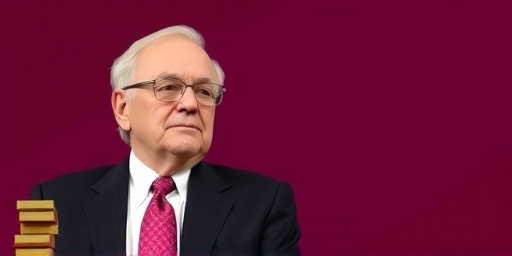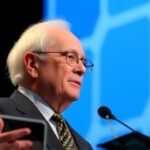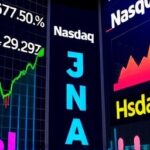In a testament to resilient business strategies, Berkshire Hathaway announced a robust 34% increase in its Q3 2025 operating profit, reaching $10.2 billion compared to $7.6 billion in the same period last year. This earnings rebound comes at a pivotal time, as global economic uncertainty looms with inflation pressures and geopolitical tensions. Led by legendary investor Warren Buffett, the conglomerate’s performance underscores its diversified portfolio’s strength, offering a bright spot for investors navigating volatile markets.
- Dissecting the 34% Earnings Jump: Core Business Resilience Shines
- Insurance Underwriting Triumphs Amid Rising Global Risks
- Railroad and Energy Powerhouses Drive Non-Insurance Gains
- Market Response and Analyst Perspectives on Berkshire’s Momentum
- Strategic Outlook: Berkshire Positions for Economic Headwinds Ahead
The report, released on November 4, 2025, highlights Berkshire Hathaway‘s ability to capitalize on core operations despite broader market headwinds. Operating profit, a key metric favored by Buffett for its exclusion of volatile investment gains and losses, paints a clearer picture of the company’s underlying health. This surge signals confidence in Berkshire’s long-term value creation model, even as the S&P 500 grapples with modest gains year-to-date.
Dissecting the 34% Earnings Jump: Core Business Resilience Shines
Berkshire Hathaway‘s Q3 2025 earnings reveal a multifaceted recovery driven by operational efficiencies across its vast empire. The company’s operating profit climbed to $10.2 billion, marking a sharp 34% rebound from the prior year’s figure. This improvement was not isolated but stemmed from strategic adjustments in key sectors, including insurance, railroads, and utilities, which collectively form the backbone of Buffett’s investment philosophy.
Warren Buffett, in his characteristic understated style, emphasized in the earnings release that “steady progress in our operating businesses remains our north star.” This sentiment echoes his long-held view that Berkshire’s value lies in its ability to generate consistent cash flows rather than chasing short-term market fluctuations. The earnings report detailed how non-insurance operations contributed $8.1 billion to the total, up 28% year-over-year, while insurance underwriting added another $2.1 billion, reflecting improved risk management amid rising catastrophe claims.
To put this in perspective, Berkshire Hathaway’s total revenue for Q3 2025 reached $92.4 billion, a 15% increase from $80.4 billion in Q3 2024. This growth was bolstered by higher volumes in energy distribution and freight transportation, sectors that have benefited from post-pandemic supply chain normalizations. Analysts note that this operating profit expansion outpaces the average for S&P 500 companies, which reported a collective 12% earnings growth in the quarter.
Breaking down the numbers further, the report highlighted a 5% rise in per-share operating earnings, adjusting for share repurchases. Berkshire Hathaway bought back $2.3 billion of its own stock in Q3, signaling Buffett’s belief in the company’s intrinsic value. These buybacks, a staple of Berkshire’s capital allocation strategy, have reduced outstanding shares by 1.2% over the past year, enhancing shareholder returns.
Insurance Underwriting Triumphs Amid Rising Global Risks
At the heart of Berkshire Hathaway’s Q3 2025 operating profit rebound lies its insurance operations, which posted a pre-tax underwriting profit of $1.8 billion—up 42% from the previous year. This segment, encompassing giants like GEICO and Berkshire Hathaway Reinsurance Group, has long been a cash cow for the conglomerate, providing float for Buffett’s investment activities.
The surge in insurance earnings can be attributed to disciplined premium pricing and favorable loss ratios. GEICO, the auto insurer, saw policies in force grow by 8%, driven by competitive digital marketing and expanded coverage options. Meanwhile, the reinsurance arm benefited from lower-than-expected catastrophe losses, despite wildfires in California and hurricanes in the Atlantic. “Our underwriters navigated a complex risk landscape with precision,” stated Ajit Jain, Berkshire’s vice chairman of insurance operations, in the earnings call.
Statistically, the combined ratio—a measure of underwriting profitability—improved to 92.3% in Q3 2025, down from 96.1% in Q3 2024. A ratio below 100% indicates profitable underwriting, and this margin expansion directly fueled the overall operating profit growth. Berkshire Hathaway’s insurance float, the premiums collected before claims are paid, stood at $165 billion at quarter-end, up 6% year-over-year, giving Buffett ample low-cost capital to deploy.
However, challenges persist. Rising climate-related risks have prompted Berkshire to hike reinsurance rates by an average of 10% for certain lines. Experts like Mary Schapiro, former SEC chair, commented in a CNBC interview, “Berkshire’s insurance resilience is a model for the industry, but escalating environmental threats will test even their fortitude.” This segment’s performance not only boosted earnings but also reinforced Berkshire Hathaway’s role as a stabilizing force in global insurance markets.
Railroad and Energy Powerhouses Drive Non-Insurance Gains
Beyond insurance, Berkshire Hathaway’s non-operating segments delivered impressive results, with BNSF Railway and Berkshire Hathaway Energy leading the charge in Q3 2025. BNSF, the largest freight railroad in North America, reported operating earnings of $1.5 billion, a 22% increase, fueled by surging demand for intermodal and agricultural shipments.
Freight volumes rose 9% year-over-year, with carloads totaling 1.2 million units. This growth aligns with broader economic recovery signals, including robust U.S. consumer spending and export activities. “BNSF’s network efficiency improvements, including AI-optimized routing, have been game-changers,” noted Matt Rose, BNSF’s executive chairman, during the earnings discussion. Investments in track upgrades and locomotive fleets, totaling $1.1 billion in capital expenditures, positioned the railroad to handle increased throughput amid supply chain bottlenecks.
On the energy front, Berkshire Hathaway Energy generated $1.2 billion in operating earnings, up 35%, thanks to higher electricity rates and renewable project completions. The segment added 500 megawatts of wind and solar capacity in Q3, advancing Berkshire’s commitment to sustainable energy. Amid volatile natural gas prices, the utility’s regulated operations provided steady returns, with a return on equity averaging 10.5%.
These non-insurance pillars contributed over 75% to the quarter’s operating profit, demonstrating diversification’s power. As Warren Buffett often quips, “We own pieces of businesses that America needs.” This Q3 performance validates that approach, with manufacturing, service, and retailing segments adding another $5.4 billion in earnings, up 18%.
- BNSF Key Metrics: 9% volume growth, $1.5B earnings
- BHE Highlights: 35% earnings rise, 500MW renewables added
- Manufacturing Boost: Driven by Duracell and Dairy Queen expansions
Market Response and Analyst Perspectives on Berkshire’s Momentum
Wall Street reacted positively to Berkshire Hathaway’s Q3 2025 earnings, with shares climbing 4.2% in after-hours trading to $485 per Class A share. This uptick reflects investor relief over the operating profit’s strength, contrasting with broader market jitters from Federal Reserve rate hike speculations. Year-to-date, Berkshire stock has outperformed the Dow Jones by 3%, underscoring its defensive appeal.
Analysts were quick to praise the results. Ken Monteiro of Jefferies upgraded his rating to “Buy,” stating, “Berkshire’s 34% operating profit rebound is a beacon of stability in uncertain times. Warren Buffett’s disciplined approach continues to deliver.” Morningstar’s guru, Greggory Warren, echoed this, projecting full-year operating earnings of $38 billion, a 25% increase from 2024.
However, not all views are unanimously bullish. Some critics point to Berkshire’s massive $280 billion cash pile as a sign of limited investment opportunities. “Buffett’s sitting on a war chest, but where to deploy it in this high-valuation environment?” questioned Whitney Tilson, a veteran Buffett watcher. Despite this, the earnings report’s details—such as a 12% rise in net investment income to $2.1 billion—alleviate concerns about opportunity costs.
Institutional ownership remains high, with Vanguard and BlackRock holding over 15% of shares combined. The report also addressed succession planning subtly, with mentions of Greg Abel’s expanded role in non-insurance operations, reassuring markets about post-Buffett continuity.
Strategic Outlook: Berkshire Positions for Economic Headwinds Ahead
Looking forward, Berkshire Hathaway’s Q3 2025 earnings position the company to weather ongoing economic challenges, including potential recessions and trade disruptions. Warren Buffett, at 95, continues to guide the ship with a focus on organic growth and opportunistic acquisitions. The conglomerate plans $12 billion in capital expenditures for 2026, targeting infrastructure in railroads and renewables.
Buffett’s annual letter, expected in February 2026, will likely delve deeper into these strategies. In the meantime, the Q3 results suggest Berkshire could pursue bolt-on deals in energy or consumer goods, leveraging its $280 billion war chest. “We’re patient hunters,” Buffett remarked in past communications, a philosophy that has served shareholders well.
Broader implications include Berkshire’s influence on corporate America. Its operating profit model encourages focus on fundamentals, potentially inspiring peers amid earnings volatility. As inflation cools to 2.5% and interest rates stabilize, Berkshire Hathaway stands ready to capitalize, with analysts forecasting 15-20% operating profit growth in 2026.
For investors, this rebound reinforces Berkshire’s status as a cornerstone holding. With diversified revenue streams and Buffett’s timeless wisdom, the company is primed for sustained success, even as global uncertainties persist.









